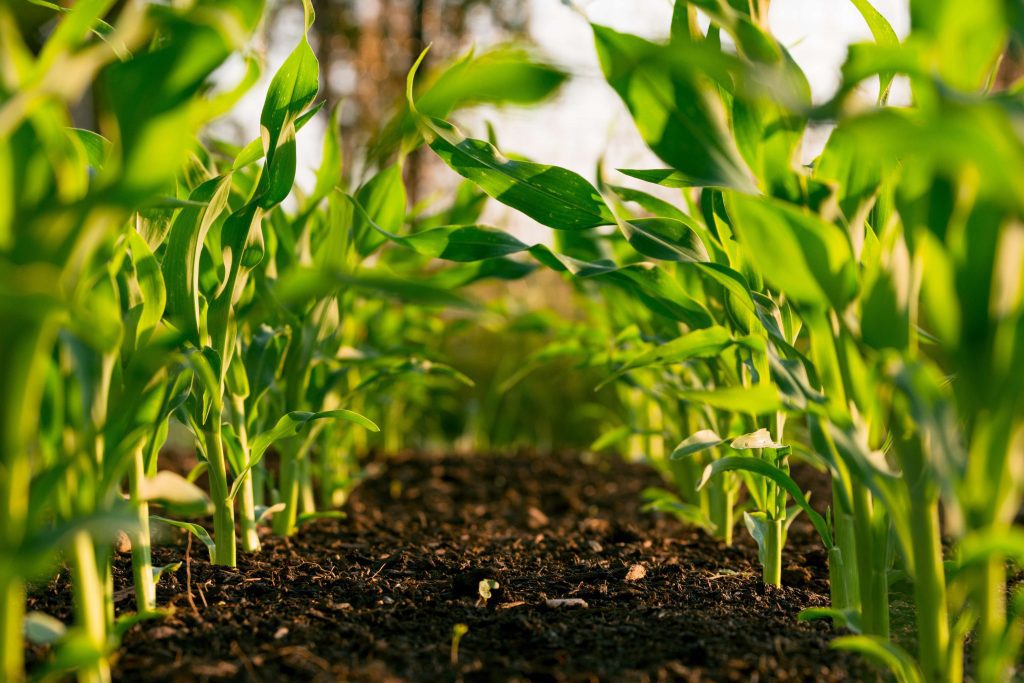
A Catch-22 situation broadly speaking, refers to a tricky situation where no one is particularly winning. It is a paradoxical situation whereby the circumstances inherent in the problem are the reason why the only solution to it becomes infeasible. Biotechnology is a relatively new technology, which involves the use of biology to make useful products. It integrates the discipline of medical sciences with that of engineering sciences in order to use biologically available ingredients for creating products and services.
In agriculture, biotechnology has come to play a huge role. Cells from different organisms are used in particular crops to enhance their yield or productivity and many times, they can also help a particular crop in fighting diseases that may be threatening their existence. The Indian Department of Biotechnology (under the Ministry of Science and Technology) in its vision statement on ‘Biotechnology in India’ states that it strives to achieve nutritionally enhanced crops with high yields with the help of agricultural biotechnology.
Agro-biotechnology is, therefore, an emerging and rapidly expanding field of biotechnology, one which has a promising future ahead. With every new kind of technology, however, there are some problems. In the case of agro-biotechnology, these might range from ethical issues pertaining to all kinds of biotechnological products and services, to patentability issues. Patenting every new kind of technology is essential in order to “protect the interests of inventors whose technologies are truly ground-breaking and commercially successful, by ensuring that an investor can control the commercial use of their invention.
Use of Biotechnology in Agriculture
Biotechnology is a time-consuming and expensive kind of technology and research in a field of technology is as crucial and critical as this is also time-consuming, expensive, and requires huge investment. As a result, granting Intellectual Property Rights (IPR) is an effective tool to protect biotechnology inventions. Patenting plants, agricultural produce, etc, however, has not been easy and even today, the Indian Patent Act of 1970 doesn’t recognize patenting of such products.
Biotechnology can be used for a variety of purposes when it comes to agriculture. In the 1990s it was witnessed that significant achievements in agricultural biotechnology, especially pertaining to recombinant bovine growth hormone, herbicide-tolerant crop varieties, and long-storable tomatoes took place. In India, genetically modified crops have been included within our agricultural products so as to make the crops disease tolerant, as in the case of the genetically modified cotton crop, and to increase efficiency and yield as in the case of several other crops. Several other important uses of genetically modified crops are –
- Improvement in quality of crops
- Minimizing damage to crops due to pest-resistant diseases, thereby reducing chemical usage.
- Less negative impact on the environment by decreasing soil erosion and greenhouse gas emissions.
- Possibility of Sustainable agriculture is enhanced.
Complexity in Patenting Agro-Biotechnology

Biotechnology patenting is fraught with ethical, environmental, and economic risks. Despite the fact that the Department of Biotechnology on their official website has acknowledged the role agrobiotechnology has to play in feeding billion-plus mouths in this country and the role that novel genes can play to deal with biotic and abiotic stresses, enhance productivity and nutritional quality, a regulatory framework regarding the same is missing from our legislative and policy discussions. The WTO Agreement on Trade-Related Aspects of Intellectual Property Rights (TRIPS) clearly states in Article 27.3(b), members shall provide for the protection of plant varieties either by patents or by an effective sui generis system or by any combination thereof.
In pursuance of the same, India passed the Protection of Plant Varieties and Farmers’ Rights Act, 2001 with the aim of providing for, the establishment of an effective system for the protection of plant varieties, the rights of farmers and plant breeders, and encouraging the development and cultivation of new varieties of plants.
The Plant Varieties Act has helped farmers by providing a legislative framework but it suffers from the problem of over-complexity and limited access to farmers, the intended recipients. Further, the Act of 2001, doesn’t talk about biotechnology patents in the field of agriculture. In fact, the agrobiotechnology regime in India is a very complex and time-consuming process and one has to go through several regulatory hurdles in order to be able to use a particular technology in the field.
The Genetic Engineering Appraisal Committee (GEAC), a statutory body under Environment Protection Act, 1986, “is responsible for granting permits to conduct experimental and large-scale open field trials and also grant approval for commercial release of biotech crops.” Currently, the only genetically modified crop used in India is Bt. Cotton. Bt. Brinjal, if approved, would have been the first edible genetically modified crop, but its approval was blocked in 2010. GM Mustard has suffered a similar fate. Thus, the regulatory regime of the country is antithetical to experimentation in the field.
Further, In the agricultural arena, the patent regime is that golden standard or form of such protection, even though there is now a faint line between patent protection and Plant Breeders’ Rights, a situation that poses an existential threat to plant breeders themselves.
Breeders’ rights are important for conserving the traditional knowledge of farmers and when patenting agrobiotechnology is considered, it gives bigger companies an even bigger hold over smaller entities like farmers, who are actually the most important stakeholders in agriculture. India, being a predominantly agricultural nation, faces this problem as a greater dilemma – farmers, being mostly unaware and uneducated about these complex laws and patent protection structures, are caught in the loop of other powerful stakeholders like governments, private companies, etc.
The farming population in India is still huge. Agriculture is not a matter of business for these people, it’s their way of life. In a sensitive situation like this, patenting agrobiotechnology, which will inevitably be the intellectual property of the rich and the powerful, puts farmers and their livelihoods in even greater peril. These poor farmers cannot distinguish between genetically modified crops and normal crops, nor can they innovate better than these companies with all the wealth and riches of the world behind them. In case these farmers unintentionally use these patented crops, they can be embroiled for years in a hopeless case where their limited money and remaining resources might also be exhausted. In fact, agrobiotechnology doesn’t hold much promise for poor farmers who struggle to make ends meet, a set of farmers who constitute the majority of the farmer population in India.
There is a difference in how developed countries deal with issues like patent protection and how developing countries like India deal with the same issue. Countries such as the USA having a strong R&D base in plant genetic engineering have chosen a robust Plant Utility Patent Legislation. India is certainly not inclined to adopt patent protection regimes for its plant varieties, rather it has shown an inclination to adopt a sui generis legislation that is non-patent, ostensibly for reasons that India is predominantly agricultural and has a strong R&D base in conventional plant breeding.
India has to keep its non-patent regime going for its plant varieties because the Indian view of agriculture is quite different from the Western concept of agriculture. In India, agriculture and land itself are God’s gifts. They are sacred and cannot be turned into solely a business. This conception drives India’s form of protection granted to plant varieties.
Aside from the obvious detriments for farmers, the technology in itself hasn’t been completely understood. There are various ethical constraints in using agrobiotechnology extensively, which may be ignored by large private companies for monetary gains. Increasing yields of these genetically modified crops can be witnessed within a span of one cropping season, however, the negative impacts might be long-term and not necessarily visible until they have caused extensive damage already. Genetically modified crops might also become resistant to applications of good herbicides or other nutritional applications for crops. This can, in fact, lead to environmental damage instead of conservation. Patenting a technology that is negatively impacting the lives of almost everyone and whose impacts can’t be fully gauged at an early stage, can be very risky as the patent will provide legal protection to the all-powerful corporate entity but its liability will be reduced to a minimum.
Conclusion
It can be concluded by saying that the non-patent kind of regime suits India’s traditional plant breeding structure very well. Agro-biotechnology is, therefore, an emerging and rapidly expanding field of biotechnology, one which has a promising future ahead. With every new kind of technology, however, there are some problems. In the case of agro-biotechnology, these might range from ethical issues pertaining to all kinds of biotechnological products and services, to patentability issues.
However, it is also time to alter the thought process about agriculture being the sacred profession and to engage in agriculture at the level of a profession that is profitable. For this, land reforms and consolidation of landholdings, along with improved land record management are essential. There is a need to involve farmers in diversified professions like agro-processing industries and involve them in the process of innovating the modifications which are absolutely critical to a crop. Traditional knowledge of farmers can help companies come up with more efficient modifications using biotechnology, which is also less harmful to the crops and human beings in the long run. Farmers’ knowledge in India is extensive and it can be used in integrating sustainable agriculture with enhanced yields and better outcomes for both agriculturists and corporates, and more importantly, for the world as a whole.